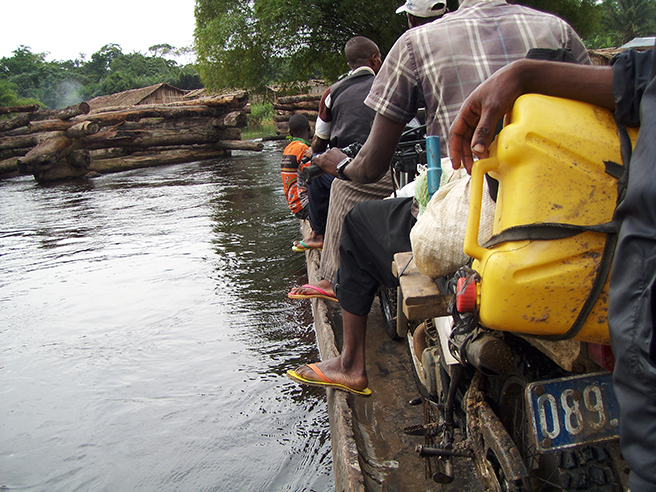Through River and Rain En Route to Congo Landscape

There’s more than one way to make a sandwich, especially if you like the crusts cut off and the finale triangle-shaped—ask any 5- to 7-year-old! Similarly, there’s more than one way to enter AWF’s Congo landscape in northwestern Democratic Republic of Congo (DRC), particularly if you’re up for a real expedition-style adventure with rudimentary living conditions, long distances to cover each day, and modest means of transportation.
Starting in the west, you can enter by plane from Mbandaka, the capital city of DRC’s Equateur Province where the AWF Congo landscape is located. This is only if you’re lucky enough to catch a small carrier plane, however, as flight schedules are not very consistent. Do note that Mbandaka is a strategic entry point. It is home to the governor and the provincial assembly—our governmental partners—and, like with any healthy relationship, stopping by to say hello is always worth the time. Once formalities are accomplished and you manage to get up in the air, fret not over the turbulence caused by the weather, which in turn can affect flight time by adding as much as a full hour to what is typically a two-hour flight. Try to remember that the rainforest has two distinct seasons—one is long and wet and the other is short, dry and foggy in the morning—and before you know it, you’re landing on a strip on the outskirts of Djolu, the small town where AWF has its main field station. Safe and sound!
As an alternative route, and if you’re keen to test your human stamina and resilience, you can also enter the Congo landscape from the eastern city of Kisangani in Oriental Province. However be aware that one-third of your trip will be a 550-km motorcycle ride (the entire trip from Kisangani to Djolu is 550-km. One-third of the time, the trails are barely the width of the tires) along dirt trails barely the width of your tires through sparsely populated villages, virgin forests and a provincial border. During the 2- to 3-day-journey, the tall grass sprouting from the surrounding undergrowth brushes against the arms of your jacket and helmet as you ride by like a kind of welcome—a hi-five of sorts—because you are here to take up their defense as an environmentalist and advocate against forest degradation and deforestation. You can count the number of villages you pass, too, with their thinly-laid reddish-brown shacks and occupants who’ll greet you with a wave. After the fortieth village you begin to lose count. These suggestions of what to do are mentioned because you’ll be moving much too fast to spot any signs of wildlife on the way. MLW isn’t a safari. In fact, most of AWF’s conservation landscapes present their own challenges. In DRC, those challenges begin with the logistics involved in reaching a remote and irreplaceable part of the tropical rainforest.